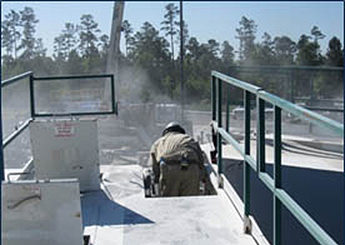NIOSH: ‘Fracking’ exposes workers to silica

Photo: NIOSH
Falls Church, VA – Oil and gas workers are exposed to respirable crystalline silica during directional drilling and hydraulic fracturing operations, a new NIOSH study concludes.
Induced hydraulic fracturing, also known as “fracking,” is the process in which large amounts of water, sand and chemicals are injected at high pressure into a well opening to force gas or oil to flow out.
Researchers collected samples from 11 fracking sites in five states during a 15-month period and determined that the samples contained silica, which is associated with workers developing the deadly lung disease silicosis, lung cancer and other respiratory diseases. Masks commonly used at fracking sites may not be sufficient to protect workers because recorded silica concentration levels exceeded those respirators’ maximum use concentration, study co-author Eric Esswein said in a press release.
Last year, OSHA and NIOSH issued a joint hazard alert warning fracking could expose workers to silica, but this study is the first systematic investigation into the issue, according to the press release.
NIOSH recommended using engineering controls to reduce the risk of silica exposure. The study was published in the July issue of the Journal of Occupational and Environmental Hygiene.

